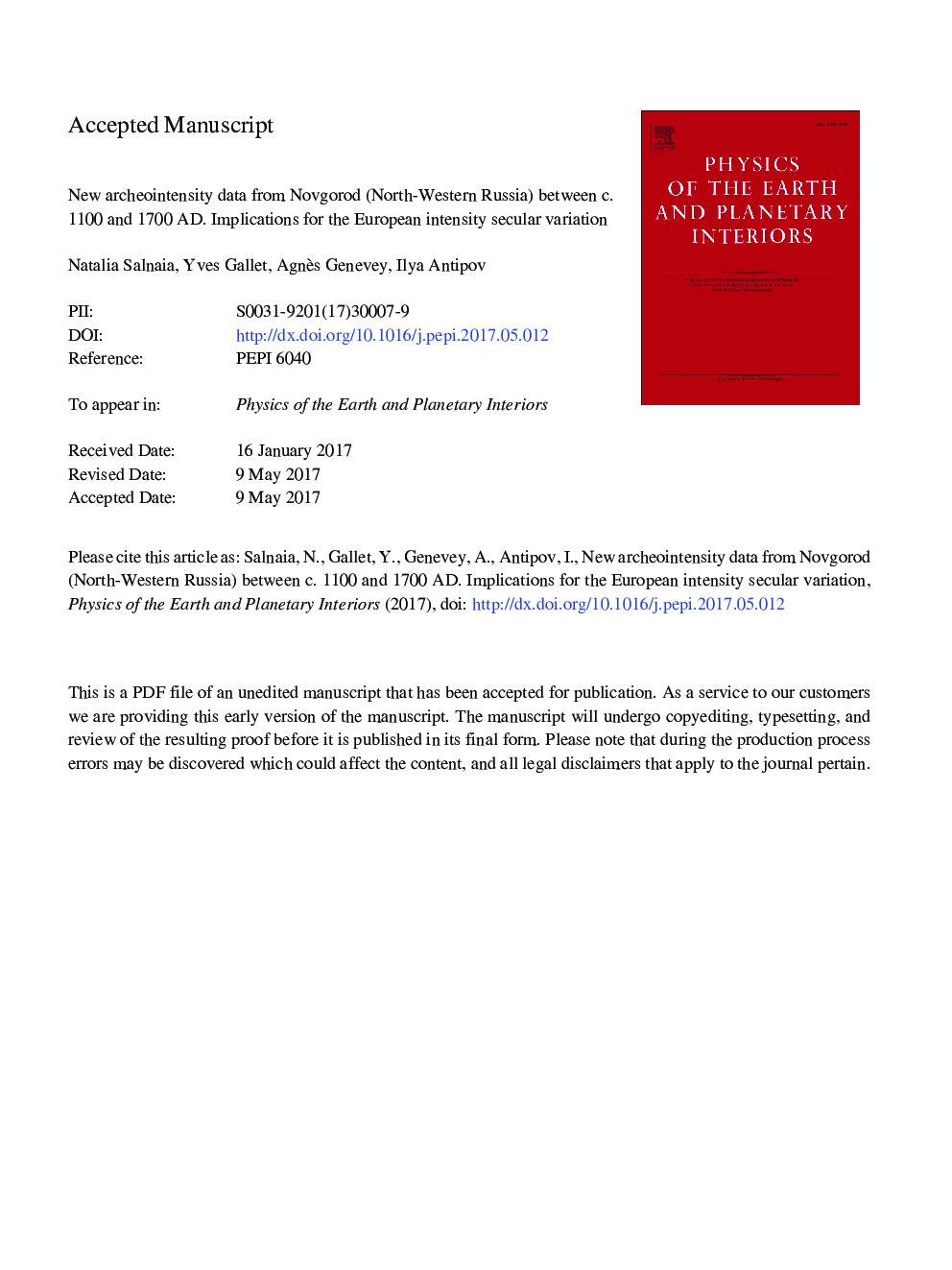| کد مقاله | کد نشریه | سال انتشار | مقاله انگلیسی | نسخه تمام متن |
|---|---|---|---|---|
| 5787297 | 1641471 | 2017 | 38 صفحه PDF | دانلود رایگان |
عنوان انگلیسی مقاله ISI
New archeointensity data from Novgorod (North-Western Russia) between c. 1100 and 1700 AD. Implications for the European intensity secular variation
ترجمه فارسی عنوان
داده های جدید نیروی انسانی از نووگورود (شمال غربی روسیه) بین سی. 1100 و 1700 میلادی. پیامدهای تغییرات سکولار شدت اروپا
دانلود مقاله + سفارش ترجمه
دانلود مقاله ISI انگلیسی
رایگان برای ایرانیان
کلمات کلیدی
تنوع سکولار، شدت میدان ژئومغناطیسی، هزاره گذشته، شمال غرب روسیه، اروپا، مدل سازی میدان ژئومغناطیس،
موضوعات مرتبط
مهندسی و علوم پایه
علوم زمین و سیارات
فیزیک زمین (ژئو فیزیک)
چکیده انگلیسی
Reconstructing the secular variation of Europe's geomagnetic field over the past millennium is challenging because of the lack of recently acquired archeomagnetic data from Western Russia. In this paper, we report on nine new archeointensity values obtained from groups of brick fragments sampled in Novgorod (North-Western Russia) and its vicinities. These fragments were collected from churches whose precise ages range from the beginning of the 12th century to the end of the 17th century AD. All the archeointensity measurements were carried out using the Triaxe experimental protocol, which takes into account the thermoremanent magnetization (TRM) anisotropy effect. Intensity determinations were performed using fast and slow cooling rates for laboratory-TRM acquisition. The results confirm that the Triaxe protocol overcomes the TRM cooling rate dependence. The new data shows that geomagnetic field intensities in North-Western Russia have decreased in the past millennium. Comparisons were made with other data previously obtained in Western Europe, the Balkans and Russia, as well as with intensity values expected in Novgorod from global geomagnetic field models. These comparisons yielded three main results: 1) The new archeointensity data do not show the occurrence of large intensity variations in North-Western Russia, as those observed in the Balkan dataset. Conversely, they appear more compatible with Western European results, which suggests a limited non-dipole field effect across Europe during the past millennium; 2) Our data are weaker than the intensity values expected in Novgorod from the available global geomagnetic field models. This suggests that the field models are inaccurate for the Novgorod area; 3) A constant linear decrease of the geocentric axial dipole moment since 1600 AD does not appear compatible with our younger data.
ناشر
Database: Elsevier - ScienceDirect (ساینس دایرکت)
Journal: Physics of the Earth and Planetary Interiors - Volume 269, August 2017, Pages 18-28
Journal: Physics of the Earth and Planetary Interiors - Volume 269, August 2017, Pages 18-28
نویسندگان
Natalia Salnaia, Yves Gallet, Agnès Genevey, Ilya Antipov,
